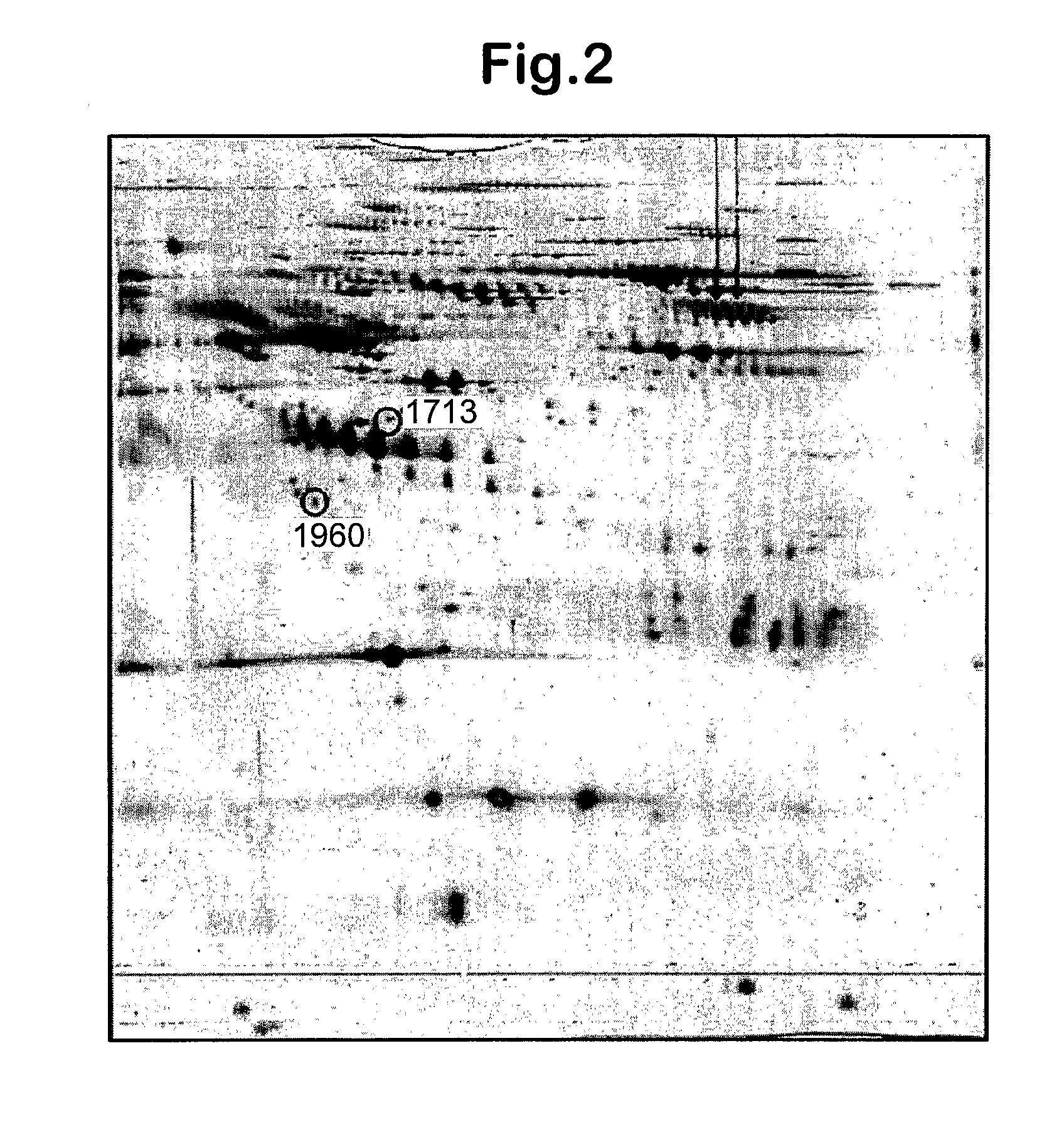Diagnosis Of Neurodegenerative Diseases
a neurodegenerative disease and diagnosis technology, applied in the direction of drug compositions, liquid/fluent solid measurements, peptides, etc., can solve the problem of clinical heterogeneity of diseases, and achieve the effect of high degree of confiden
- Summary
- Abstract
- Description
- Claims
- Application Information
AI Technical Summary
Benefits of technology
Problems solved by technology
Method used
Image
Examples
example 1
[0044]Ten plasma samples were taken from patients (4 female, 6 male) who were diagnosed with variant CJD (vCJD) serving as a neurological disease control, ten from patients (7 female, 3 male) diagnosed by genetic testing as having Huntington's Disease (HD) and ten from controls, i.e. normal patients (8 female, 2 male) not having any neuropathological symptoms.
[0045]Albumin and IgG were removed from the samples using a kit supplied by Amersham Biosciences UK Ltd. This kit contains an affinity resin containing antibody that specifically removes albumin and IgG directly from whole human serum and plasma samples. It is claimed that more than 95% albumin and more than 90% IgG removal from 15 μl human serum / plasma can be achieved, thereby increasing the resolution of lower abundance proteins in subsequent electrophoresis. A microspin column is used, through which the unbound protein is eluted.
[0046]Depletion was carried out according to the manufacturer's instructions using a starting vol...
example 2
[0057]The following Western blotting experiments were performed to show the use of the invention for monitoring the progression of Huntington's Disease.
[0058]Plasma samples were obtained, with appropriate consents, from 55 patients having various stages of Huntington's Disease and from 15 normal patients, as controls. The experimental groups were: control, pre-symptomatic (PST or P), early (E), moderate (M), 15 samples each and advanced (A), 10 samples. The samples were diluted 1 in 300 with sterile PBS (Sigma) and the protein concentration determined in triplicate, using BSA as a standard and the DC protein assay kit (Bio-Rad Laboratories Ltd, Herts, UK). Master mixes of plasma proteins were subsequently prepared to limit pipetting error and freeze-thawing and to enable identical samples to be run on a number of gels.
[0059]The samples were denatured at 95° C. for 10 min in Laemmli sample buffer (Sigma) and size-separated using 20 cm×10 cm 12% or 16% Tris-Glycine acrylamide gels (Ge...
example 3
Introduction
[0067]Components within the plasma from patients with Huntingdon's disease (HD) and healthy controls (CON; not age-sex matched) were profiled using surface enhanced laser desorption / ionisation time-of flight mass spectrometry (SELDI). Three experiments were performed, each involving the same set of plasma samples but differing in the chip or wash buffer used. The HD group was further sub-divided into pre—(PRE), early—(EAR), moderate—(MOD) or advanced-disease (ADV). The control and disease groups all consisted of 15 patients samples except for the ADV group, which contained 10 samples. The protein profiles of plasma were obtained using Protein Chips (Ciphergen Biosystems) with either a strong anion exchange surface (SAX, Q10) or a weak cation exchange surface (WCX, CM10). The CM10 chips were equilibrated and washed in only one type of buffer whilst the Q10 chips were analysed following treatment with two alternative buffers. The experiment using Q10 chips washed in 100 mM...
PUM
| Property | Measurement | Unit |
|---|---|---|
| volume | aaaaa | aaaaa |
| pH | aaaaa | aaaaa |
| pH | aaaaa | aaaaa |
Abstract
Description
Claims
Application Information
 Login to View More
Login to View More - R&D
- Intellectual Property
- Life Sciences
- Materials
- Tech Scout
- Unparalleled Data Quality
- Higher Quality Content
- 60% Fewer Hallucinations
Browse by: Latest US Patents, China's latest patents, Technical Efficacy Thesaurus, Application Domain, Technology Topic, Popular Technical Reports.
© 2025 PatSnap. All rights reserved.Legal|Privacy policy|Modern Slavery Act Transparency Statement|Sitemap|About US| Contact US: help@patsnap.com



